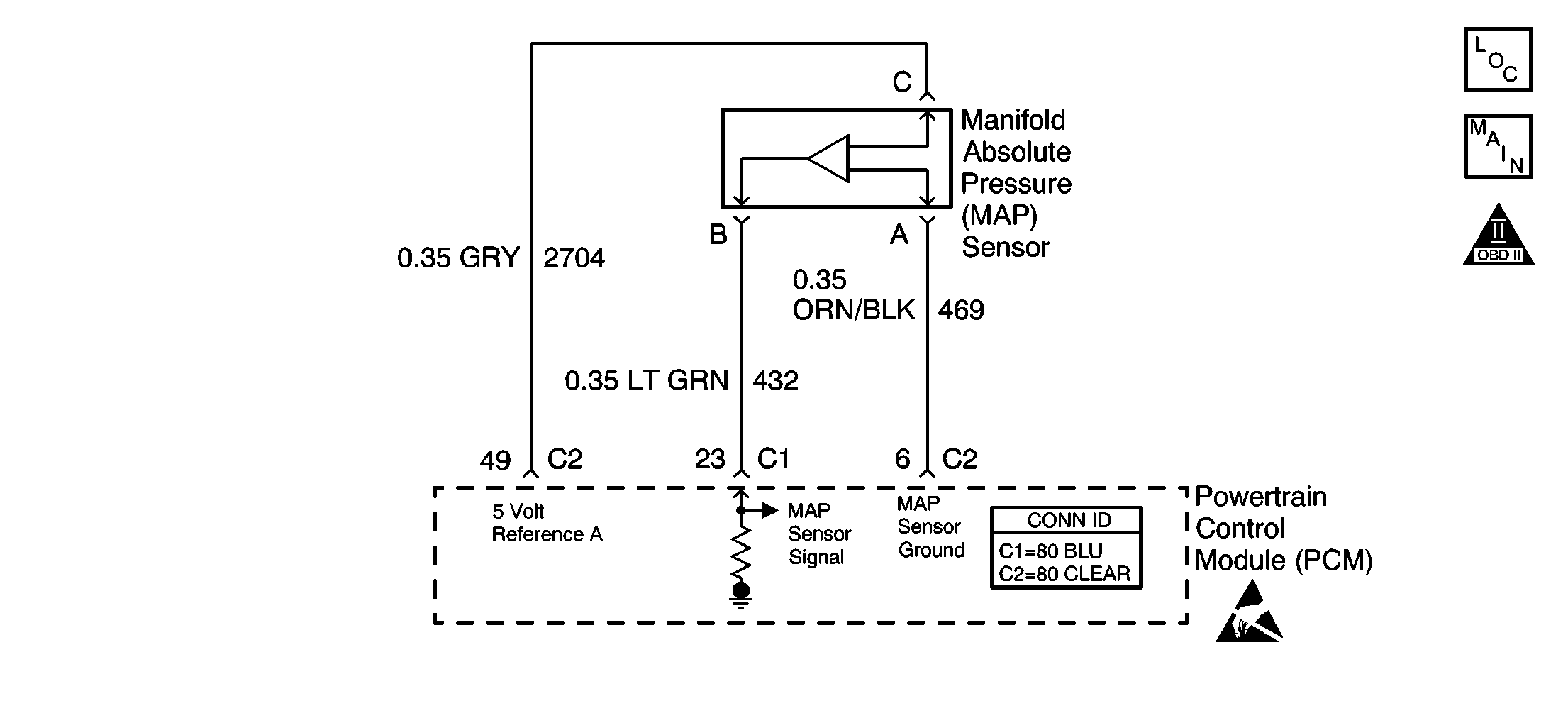
Circuit Description
The manifold absolute pressure (MAP) sensor responds to changes in intake
manifold pressure. The PCM supplies a 5 volt reference and a ground for the
MAP sensor. The MAP sensor provides a signal to the PCM relative to the
pressure changes in the manifold. The MAP sensor signal voltage to the
PCM varies from below 2 volts at idle (low manifold absolute pressure
- high vacuum) to above 4 volts with the key ON, engine not running
or at wide-open throttle (high manifold absolute pressure - low vacuum).
The PCM monitors the MAP signals for voltages outside the normal range
of the MAP sensor. If the PCM detects a MAP sensor voltage that is intermittently
high, DTC P1106 will set.
Conditions for Running the DTC
| • | No TP sensor DTCs are set |
| • | The engine has been running for a length of time that is determined
by startup coolant temperature. The length of time ranges from 3 minutes
at less than -30°C (-22°F) to less than a second at
more than 30°C (86°F). |
| • | The throttle angle is less than 89 percent when engine
speed is less than 1000 RPM. |
| • | The throttle angle is less than 97 percent when engine
speed in above 1000 RPM. |
Conditions for Setting the DTC
| • | The MAP sensor signal voltage is more than 4.9 volts. |
| • | The condition exists for less than 1 second. |
Action Taken When the DTC Sets
| • | The PCM will illuminate the malfunction indicator lamp (MIL) the
first time the malfunction is detected. |
| • | The PCM will store the conditions present when the DTC set as
Freeze Frame and Fail Records data. |
Conditions for Clearing the MIL/DTC
| • | The PCM will turn the MIL OFF during the third consecutive trip
in which the diagnostic runs and passes. |
| • | The History DTC will clear after 40 consecutive warm-up cycles
have occured without a malfunction. |
| • | The DTC can be cleared by using the scan tool Clear DTC Information
function. |
Diagnostic Aids
If the condition is intermittent, refer to
Intermittent Conditions
in Symptoms.

